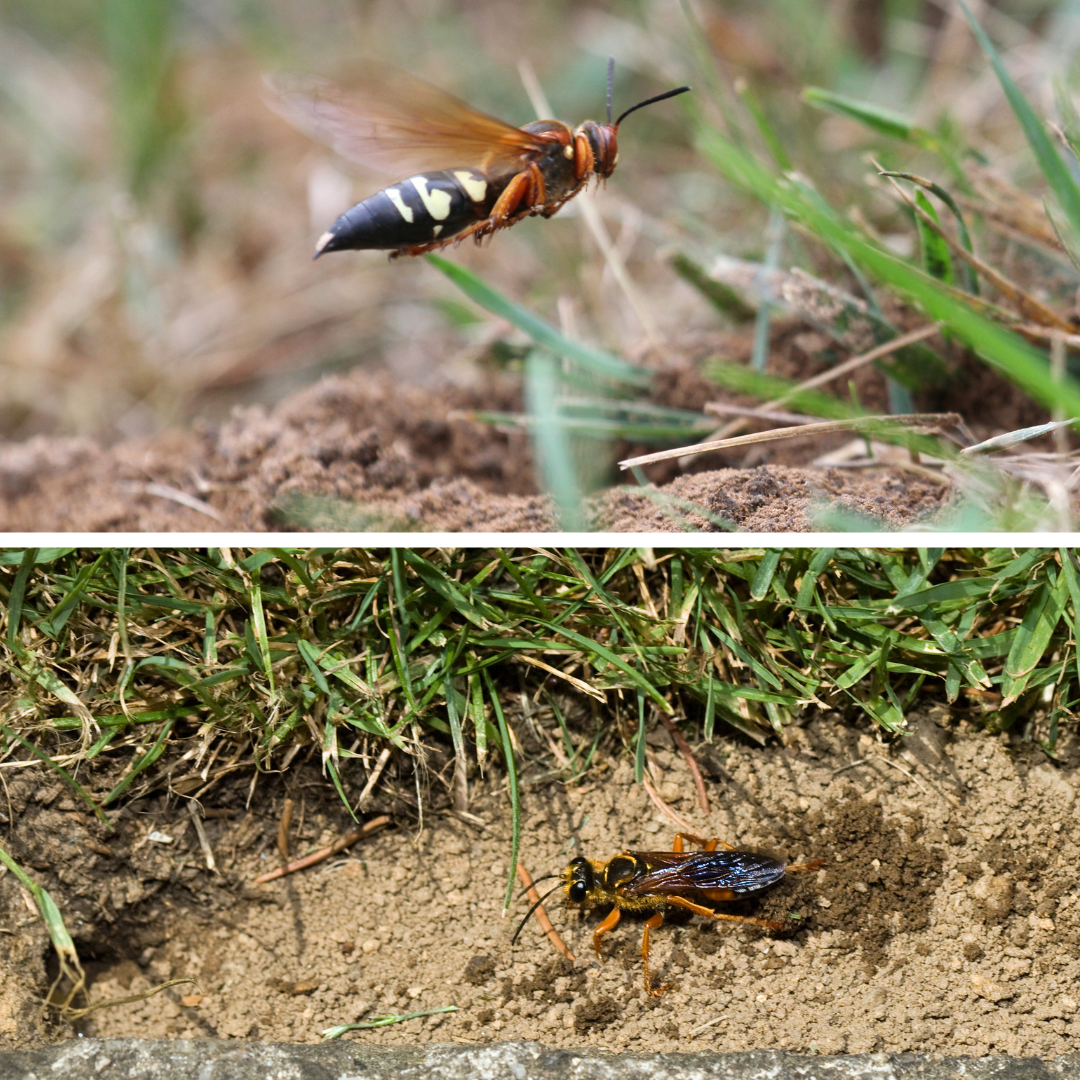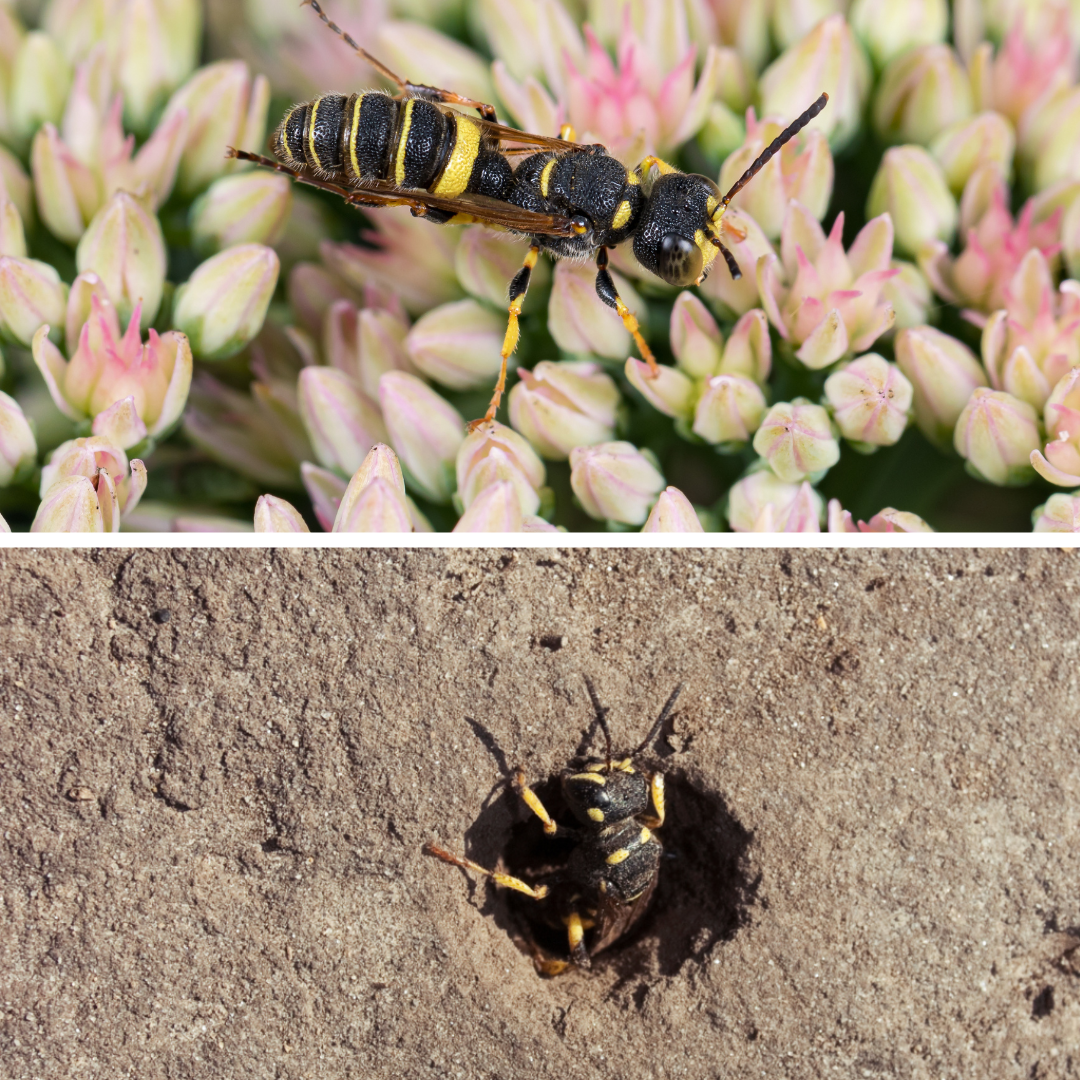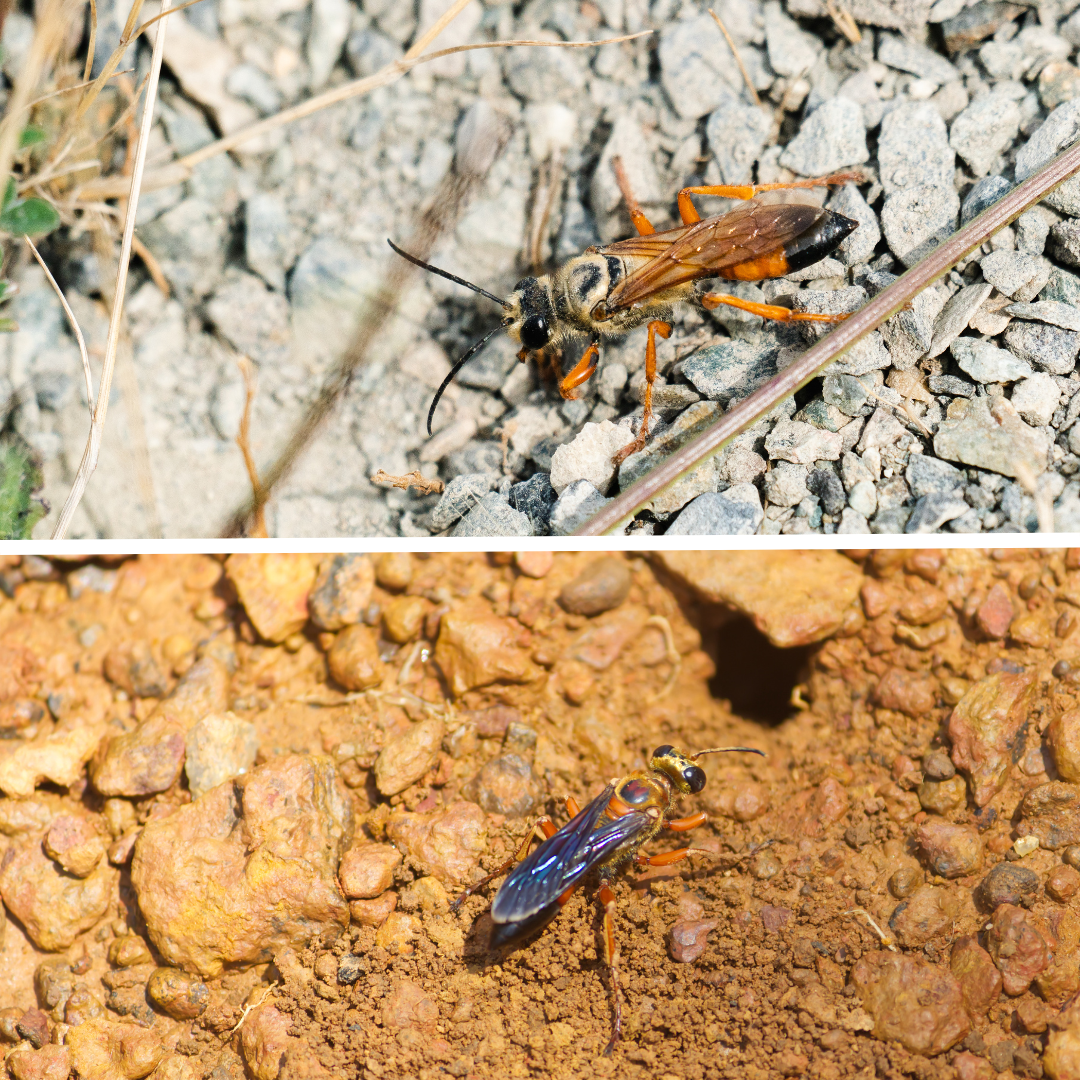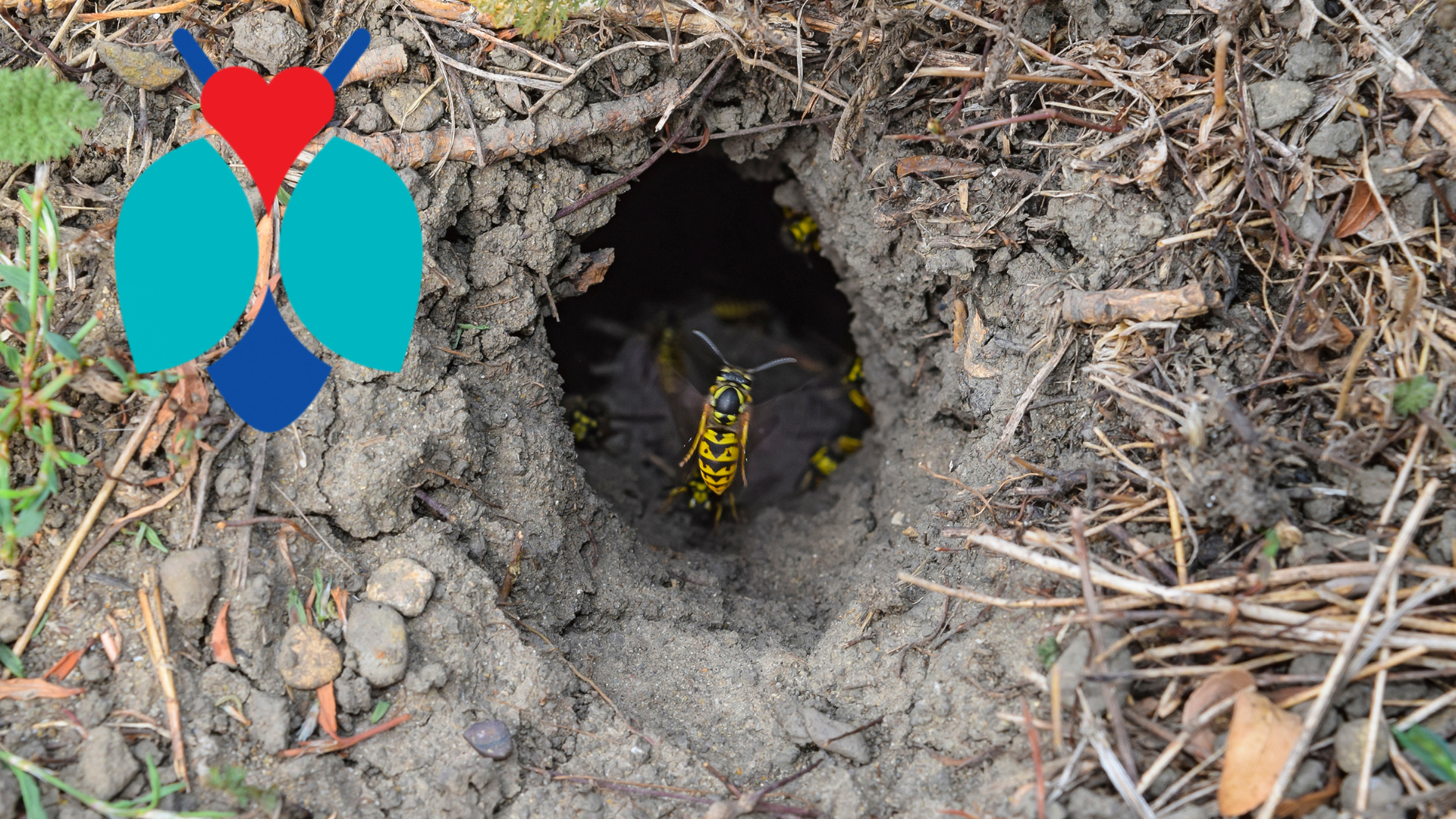Ground-digging wasps dig burrows for different reasons. They dig burrows to protect themselves from predators, lay eggs, and help them find and store food.

Yellow Jackets
Not every yellow jacket nest is built underground. When they are found in the ground they often use previously dug-out burrows made by rodents or other insects. It’s also common to find yellow jackets burrowing inside retaining walls. Their burrows store their eggs, larvae, food, workers, and queen. One nest by the end of the summer could have a colony of 2000-4000 wasps living inside.

Cicada Killer Wasps
Cicada killer wasps are the largest wasps in Minnesota. They can grow to be between 1-3 inches in length. Luckily they are solitary wasps. So only one wasp is living in each burrow. Although it’s common for one wasp to dig multiple burrows. They use their burrows as a place to store cicadas to feed on for later.

Weevil Wasps
Weevil wasps are solitary wasps. Their burrows are often found along the side of roads, inside parks, and on baseball fields. They dig underground burrows to store weevil beetles inside. The females will paralyze the beetle with their venom and leave it inside their nest for their larvae to feed on it. After feeding the larvae turns into an adult and leaves the nest.

Great Golden Digger Wasp
Digger wasps are nonaggressive solitary wasps. They grow to be between 1-1.5 inches in length. A female will dig 5 to 6 burrows in her lifetime that hold 2-3 eggs. Their main diet consists of flower nectar. They are often found living in open fields and other grassy habitats.
Call Today! 952-404-2646
BOGO Provides Pest Control Services For the Twin Cities and Beyond!
Anoka|Apple Valley| Bloomington|Burnsville|Champlin|Chanhassen|Coon Rapids|Cottage Grove|Deephaven| Delano|Eagan|Eden Prairie|Edina|Elk River|Excelsior|Golden Valley|Independence|Inver Grove Heights| Lino Lakes|Long Lake|Maple Grove|Maple Plain|Maplewood|Medina|Minneapolis| Minnetonka|Minnetrista|Mound|New Brighton|New Hope|North Oaks|Orono|Prior Lake|Plymouth|Ramsey|Rogers|Roseville|Shoreview| Shorewood|Stillwater|St. Louis Park|St. Paul|Victoria|Waconia|Wayzata|White Bear Lake|Woodbury|




